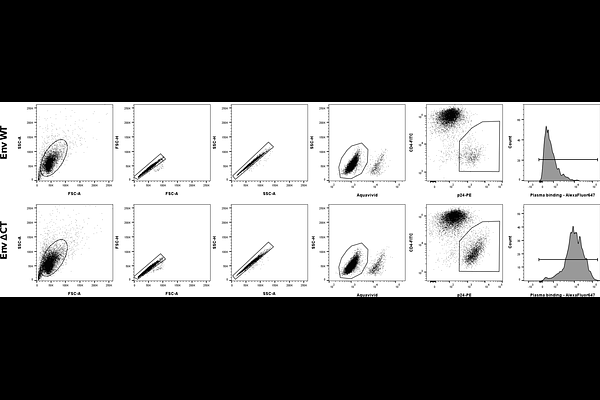The HIV-1 envelope cytoplasmic tail protects infected cells from ADCC by downregulating CD4

The HIV-1 envelope cytoplasmic tail protects infected cells from ADCC by downregulating CD4
Tauzin, A.; Belanger, E.; Prevost, J.; Medjahed, H.; Bourassa, C.; Bibollet-Ruche, F.; Richard, J.; Hahn, B. H.; Finzi, A.
AbstractHIV-1-mediated CD4 downregulation is a well-known mechanism that protects infected cells from antibody-dependent cellular cytotoxicity (ADCC). While CD4 downregulation by HIV-1 Nef and Vpu proteins has been extensively studied, the contribution of the HIV-1 envelope glycoprotein (Env) in this mechanism is less understood. While Env is known to retain CD4 in the endoplasmic reticulum (ER) through its CD4-binding site (CD4bs), little is known about the mechanisms underlying this process. Here we show that the cytoplasmic tail of Env is a major determinant in CD4 downregulation. This function is highly conserved as it was observed with nine different infectious molecular clones from four clades. The small but significant accumulation of CD4 at the surface of cells infected with Env cytoplasmic tail deleted viruses is sufficient to trigger Env to adopt a more open conformation. This prompted recognition of such HIV-1-infected cells by plasma from people living with HIV (PLWH) and several families of CD4-induced (CD4i) antibodies, leading to the elimination of these cells by ADCC. While cytoplasmic tail truncations are known to enhance Env expression at the cell surface, this did not fully explain the increased recognition of infected cells by CD4i antibodies and plasma from PLWH. Introduction of the CD4bs D368R mutation, which abrogates CD4 interaction, decreased Env recognition and ADCC. Overall, our results show that CD4 downregulation by the cytoplasmic tail of Env contributes to the protection of infected cells from ADCC.